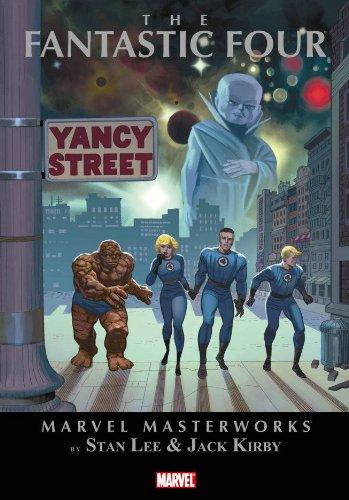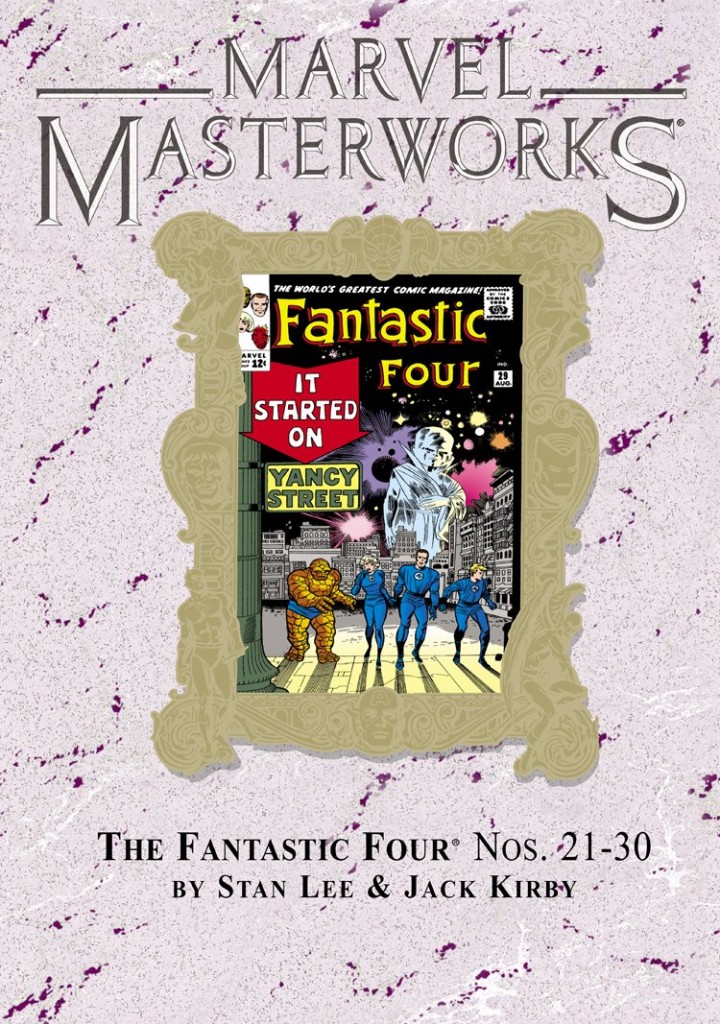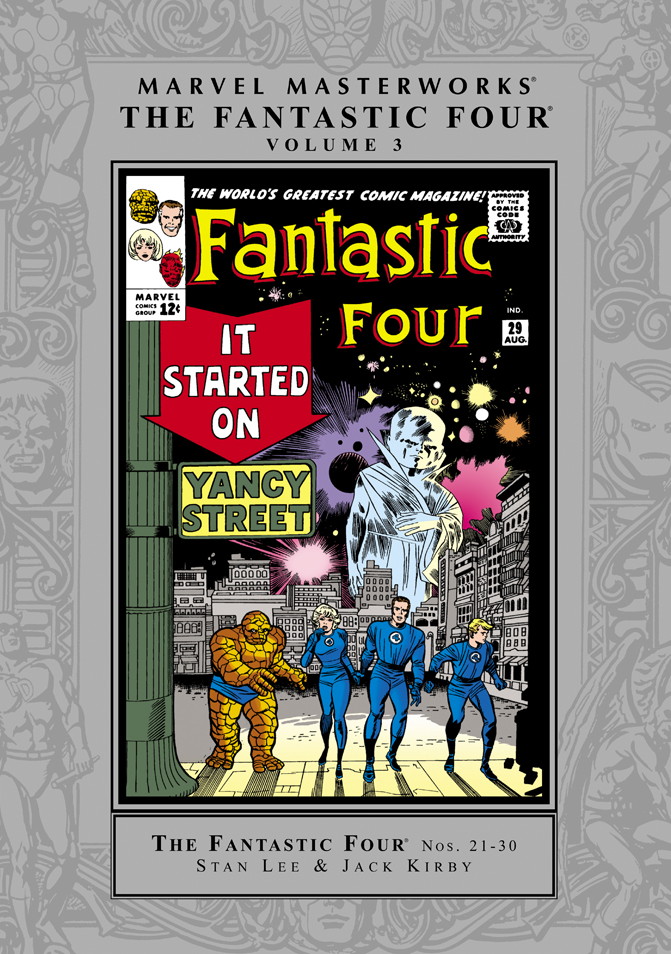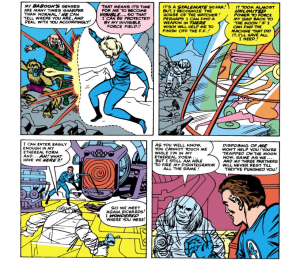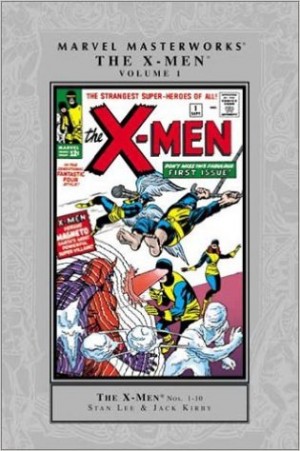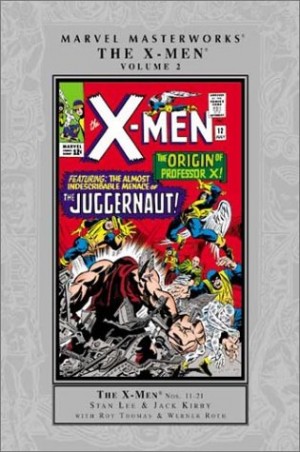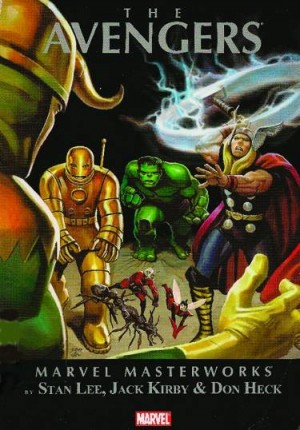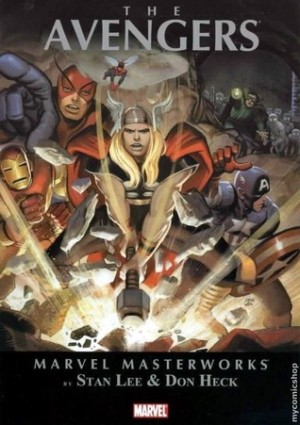Review by Graham Johnstone
Only three years into the Fantastic Four, this volume covering 1963-1964, it feels as if things are flagging, as reappearances of adversaries from earlier issues are prioritised. It may be that as Stan Lee created other titles, he left more to artist/co-plotter Jack Kirby, and evidence of the expanding Marvel universe is the array of crossovers and guest stars: Nick Fury, the X-Men, Dr Strange, the Avengers and a double dose of the Hulk. They appeal to the inner fanboy/girl, but stepping back a little they feel quite contrived.
An alien arrives in New York with seemingly infinite, and dangerous powers to realise his imagination. It’s similar to the earlier Impossible Man (volume two), but the former was childlike and playful, while the Infant Terrible acts from fear, but is no less dangerous. It’s a brilliant launchpad for Kirby’s visual ingenuity, as the infant traps people and cars in a vast spiral maze, and creates giant spinning tops. The aerial view of the army of robot soldiers marching through Manhattan is quirkily stunning. Mr Fantastic here proves himself more than a science nerd – he’s a leader, able to grasp and resolve the whole situation.
The Invisible Girl in this volume thankfully expands her powers, now making objects invisible and creating invisible barriers and ‘force-fields’. This makes no logical sense, other than to let her to play an increased role in the action. The invisibility effects are nicely realised by Kirby in dotted lines, and lead to some lovely compositions.
There’s more of the meta-fictional messing with genre conventions, including a tale where the FF are beset by complaints, and neighbour disputes. “My cat took one look at [The Thing] and ran away!” A sculptor appears with a photograph of his abstract masterpiece, ‘Twilight over Hoboken’ – melted when the Human Torch flew past his window. It’s witty and fun. All this turns out to be part of the Mole Man’s implausible manoeuvering of them to buy his booby-trapped island. From there the story deteriorates, but Kirby’s drawings of the villain’s gadgets and underground lair are spectacular.
‘It Started on Yancy St.’ is a tale of contrasts, with a foray into the ‘hood of the eponymous gang, who torment the Thing with prank mail. Lee and Kirby gleefully puncture their characters’ heroic status. Unseen assailants drop a bin on the Thing, dowse the Torch with a simple bucket of water, and find the Invisible Girl with the use of sneezing powder. Yet the issue culminates on the moon in a meeting with the extraterrestrial Watcher, and his advanced tech – including a machine to speed evolution.
For comics scholars, a subtext of these stories is the relationship between writer Lee and artist Kirby in creating them. It’s understood that Kirby would draw pages from a plot, or just a premise, from Lee, who would write the final script for the drawn pages. This is confirmed by numerous examples of the script, explaining, spinning, or even gently mocking what’s shown in the pictures.
They had yet to settle on the right inker for Kirby’s pencils. Here it’s mostly George ‘Bell’ (aka Roussos), who’s flat and mannered. It improves with Chic Stone towards the end.
As with the earlier volumes, there are great moments amongst a lot of run of the mill stories. Despite some mediocre inking, the strength of Kirby’s composition, visual invention, and dynamic action still shines through. The best of the Lee/Kirby work, though, is still to come.
These stories are also available in Fantastic Four Omnibus 1, and Essential Fantastic Four volume 2.
